Muraya (Murrayya)

Muraya plant (from the Latin Murraya) belongs to the genus of evergreen shrubs or trees of the rue family (Rutaceae). It also has other names - curry leaves (English), feuille de murraya (French).
This species is similar in many ways to citrus fruits. The name was given in honor of the famous botanist, a native of Sweden - Johan Andreas Murray.
In domestic textbooks, you can often find the name Muraya, although it is more correct to call this plant Murray. However, this does not change its essence. The Indians even call it him, kari-patta or kari-phulia.
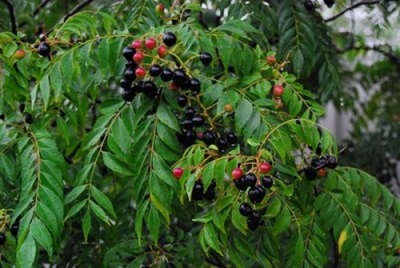
Appearance
- Mature shoots are smooth in shape, while young shoots are pubescent. Leaflets are elliptical, there may be five or seven.
- Flowers solitary in panicled muraya. In aronia (also called a curry tree), flowers collected from the top of the inflorescence, as a rule, have a strong aroma. Their diameter is approximately 2 mm and their color is light cream or white. Flowering can continue for six months.
- The fruit is presented in the form of a small black or red berry, depending on the type of muraya. The fruit ripening period is 4 months.
It is noteworthy that ripe fruits, flowers, and new, young buds can grow on one muraya plant at the same time.
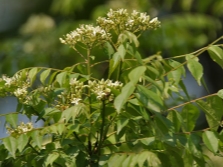


Kinds
According to studies, there are eight types of muraya in the world. However, the two most popular are:
Black muraya
They are bushes or trees that do not stop growing green, the height of which does not exceed 3 meters. The place of their main distribution is Sri Lanka and India. Castings are dried or consumed fresh. Even after drying, the aroma and taste remain pristine. Also, this type of muraya has another name - a curry tree. The fruits are edible, but not the seeds. They are poisonous.

Muraya paniculata
It is presented in the form of a shrub, the height of which does not exceed three meters. The leaves are small in size, the flowers are white, the fruits are fleshy, bright red in color and no more than 2 centimeters in size. Mostly found as a houseplant. The Latin name for panicled muraya is Murraya paniculata, although it also has a different name - orange jasmine, fragrant muraya. The fruits are actively used for food, the leaves are also chewed and used in medicine.

Where does it grow
Muraya is not so common around the world. In fact, you can meet this plant in Sumatra, the Java Islands, Indochina and the tropics of India.
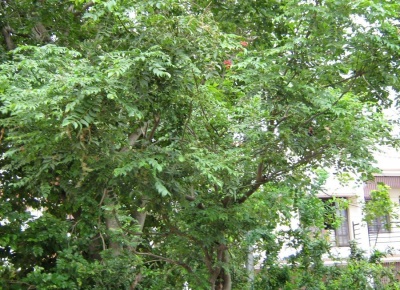
spice making method
Muraya has a very delicate structure of the leaves, after chewing, there is a lasting effect and a taste of freshness. Experts recommend using fresh leaves, but they are often frozen to increase their shelf life. At the same time, it is important not to tear off the leaves from the petiole, because of this the taste is lost. But if you dry the leaves, they will still retain their taste and great aroma.

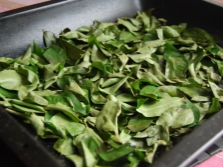

Peculiarities
- The leaves of the Curry Tree, or Aronia Muraya, have an excellent scent that can be compared to a very expensive perfume;
- The flowering of muraya paniculate spreads a unique aroma throughout the apartment.

The nutritional value
Per 100 grams of edible part of the product:
| Squirrels | Fats | Carbohydrates | calories |
| 16.8 gr. | 8.3 gr. | 17.5 gr. | 203 kcal |
Chemical composition
- The pulp of berries is 64.9% water;
- In berry juice, 16.8% is soluble solids;
The pulp contains:
- 9.76% - total sugars;
- 9.58% - reducing sugars;
- 0.17% - non-reducing sugars;
- tannins (a small amount);
- The acidity of the fruit is low;
- 100 grams of pulp contains 13.35 mg of vitamin C;
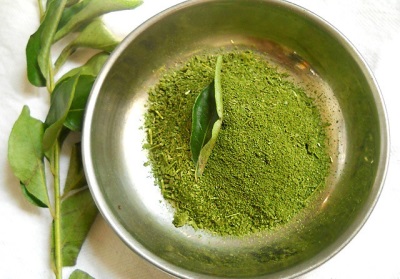
Mineral composition - 2.162%:
- protein - 1.97 gr.;
- P - 0.082 gr.;
- K - 0.811 gr.;
- Ca - 0.166 gr.;
- Mg - 0.216 gr.;
- Fe - 0.007 gr.
Beneficial features
The beneficial properties of muraya include:
- Providing an analgesic effect;
- Antifungal effect;
- Prevents inflammatory processes.

Contraindications
In fact, muraya has no contraindications. An exception is the individual intolerance of the components. Plus, experts recommend using the plant in moderation.
Oil
Steam distillation produces an essential oil made from muraya leaves. It has a light yellow tint, a spicy aroma, somewhat similar to curry powder.
Aronia muraya essential oil has a beneficial effect on hemorrhoids, blood diseases, which has been confirmed by relevant studies. Topical application allows you to cure skin problems that people in the tropics are prone to. In addition, ether helps with insect bites that release poison.
The oil has a characteristic sweet, deep and spicy aroma with a certain amount of sourness.
It has a multifaceted effect on a person:
- Improves the functioning of the digestive system;
- They serve as an excellent diaphoretic;
- Used as a hair tonic;
- Helps to improve the functionality of the excretory organs;
- Has a tonic effect;
- Reduces pressure.

Essential oils can be used in a variety of ways:
- Cosmetics. Muraya oil is added to shampoos, creams and hair balms. 3 to 5 drops of essential oil are added to a tablespoon of the base;
- Cold inhalations. To do this, add essential oil (a few drops) to a tablespoon of water or odorless oil and place in an aroma lamp. Light a candle under it and conduct an inhalation session;
- Hot inhalation. Here you need to add 1-2 drops of muraya essential oil to 100 milliliters of water. Inhale the vapors gradually. A session can last from 5 to 20 minutes;
- Mouth rinse. Add 4 drops of ether and a teaspoon of honey to half a glass of water. Please note that if you exceed the dose, nausea may occur.

Application
In cooking
Many people like to use muraya leaves in cooking. This seasoning is appreciated for its magnificent aroma, and also refined taste.
There are quite a few dishes in which muraya is very appropriate:
- Vegetable and meat dishes;
- Roasting the leaves in ghee, which allows the oil to be enriched with aromas, is used to prepare other dishes;
- Vegetable stews;
- Dishes from beans, chicken, meat, stewed vegetables;
- Homemade sausages;
- Snacks and soups;
- Hot fish and vegetable dishes;
- The combination of muraya and seafood is considered ideal;
- To make tea, dried flowers of the plant are added to give a specific smell.


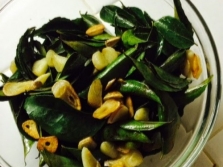
In medicine
The medical properties of muraya are extensive. Largely due to the fact that literally every element of the plant, from the flower to the root, has its own influence. Let's name some of the possibilities of muraya useful for medicine.
- Prevention of premature aging;
- Strengthening the walls of blood vessels and capillaries;
- Treatment of coronary heart disease;
- Counteracting hypertension;
- Recovery of heart failure;
- Treatment of diabetes;
- Anti-nausea, vomiting, indigestion, dysentery and diarrhoea.

Now it is worth talking about some of the features of the use of this plant in certain situations.
Head or tooth pain
To do this, use the leaves of the plant, which must be broken off, chewed and swallowed. A great alternative to analgin. A similar method of taking muraya allows you to get rid of stomatitis, wounds in the oral cavity and tonsillitis.
Strengthening the body
If you are healthy, you still should not give up muraya. To get a charge of vivacity and strength, just chew the berries when you feel tired.
Throat treatment
It is necessary to make a decoction of the leaves. For a glass of boiling water - 4-5 leaves of muraya. You can drink or just rinse the cavity. This should be done regularly, every three hours.

Healing tincture
For its preparation, take 4 tbsp. l. fruits and leaves, pour 500 milliliters of vodka. You need to insist 10 days (necessarily in some dark place). Consume 2-3 times before meals during the day (20 minutes before meals). Portion - 20 drops of the resulting tincture, diluted with water. This will reduce the pressure. If you have high blood pressure, you can take forty drops. Also, the tincture serves as a remedy for the treatment of thyroid gland, diabetes, impotence.
Suffocation, malaise
If you feel unwell, take a high pillow, lie down on the bed and put a muraya leaf under your tongue.
Prevention
Muraya, or rather berries, stop aging, prolong life. For prevention, use several berries 2-4 times a day. It is best to make a tincture as it is cheaper but just as effective.
Dermatitis
To prepare a remedy for the treatment of dermatitis, you need to mix a tablespoon of plantain, the same amount of rosemary and fresh muraya leaves. All this pour boiling water (1 liter) and insist for 30 minutes. Then strain and apply a napkin soaked in tincture to the inflamed areas. The procedure is repeated every two hours.
In cosmetology
It is unlikely that anyone will be surprised by the fact that muraya is successfully used in cosmetology. This is where fresh leaves come into play.

- Rubbing them to a paste and adding turmeric, we get an excellent healing mask, which is applied to problem skin. If you do this procedure every day for 2 weeks, you can get rid of blackheads and pores, making your skin clear and naturally shiny.
- If you boil the leaves with coconut oil, you will make a natural hair dye. With its help, you can remove gray hair, strengthen hair roots, improve growth. Don't be surprised by the healthy and long hair of girls in India. They have long been using special masks after washing their hair based on curry leaves. It consists of: leaf paste, fenugreek and hibiscus.
- If you feel that your skin is starting to fade, use a very effective remedy. To prepare it, pour 2 tablespoons of muraya flowers with 2 cups of hot water. After insisting 5 hours, strain the broth. In the morning, wash your face with this decoction (it should be cold). One serving can be stored in the refrigerator for only a few days.



At home
The domestic use of muraya was no exception:
- As decorative houseplants that decorate the house;
- As an insect repellent (chokeberry muraya is suitable for this);
- As a component for the preparation of perfumes.

Varieties
Quite often in the specialized literature, gardening magazines, the Dutch muraya is mentioned. Some gardeners believe that this is a separate species or variety of plant. However, if you saw a flower called Muraya Dutch in a store, this does not mean anything other than the place where the flower was brought from - from Holland.
A characteristic feature of such a plant is that different seedlings of different heights are planted in a pot. But in fact, this is a simple panicled muraya.
Not every grower is interested in such a specimen. Despite the beautiful leaves, flowering occurs only after 5-8 years. Not everyone is ready to wait that long.

Growing at home
If you are looking for an unpretentious, interesting plant for indoor growing, then Muraya is for you. However, in order for the plant to feel good, it is necessary to make certain recommendations.

reproduction
Muraya is propagated by cuttings or by seeds. However, the cuttings have a large percentage of marriage, and the process itself takes a long time.
seeds
Dwarf Muraya can only reproduce by seeds. It is better to plant them immediately after extraction from the fetus. Shoot appears approximately 7-14 days after planting. It is necessary to seat in pots of small volume, about 200 milliliters.
Seeds have a limited viability cycle. They should be planted fresh or within a month and a half after picking the berries. If you plant dried seeds, the chances of seeing anything are zero.
Muraya loves soil that is slightly acidic or neutral, loose. The ideal mixture consists of leafy, soddy, humus soil and sand with large grains. The proportions are 2 to 2 to 2 to 1.Another option is to purchase a ready-made citrus plant mix and add some baking powder to it. Keep in mind, the more baking powder you need, the younger the muraya.
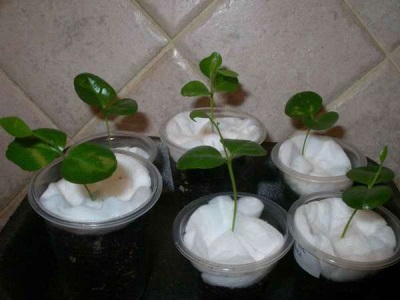
Care
For nutrition, you need to feed the plant once a month. In this case, be sure to alternately use mineral and organic components. A good mineral fertilizer in this case is what is recommended for bonsai trees. It is better to underfeed than to overfeed the murai, otherwise flowering may be inactive. Make sure that the fertilizer contains no chlorine, which is detrimental to this plant.
Watering should be plentiful, especially in warm seasons. You can't over-moisturize either. Don't let the water stagnate. In cool seasons, water when the top layer has time to dry. water should be without chlorine, settled at room temperature for a long time. Prepare a few bottles in advance. The presence of chlorine in the water is not allowed. To soften the water, add a little vinegar or citric acid to it. If you violate the rules of watering, the leaves will fall off.
Muraya does well in dry air conditions, but it can lead to drying of the tips of the leaves. Periodically it is recommended to wet the plant with a sprayer with warm water. To create optimal conditions for air humidity near the plant, place it on a pallet, where add wet expanded clay.



As far as light is concerned, ideal lighting conditions are between 6000 and 7800 lux. But do not allow direct sunlight to hit the plant, as the foliage will begin to fall. Fitolamps are a good helper in providing the right level of refreshment. It is better to put the plant on the western or eastern windows.
If we talk about temperature, then muraya loves heat, but not heat.Comfortable home temperature - 25 degrees Celsius in summer, or 17 degrees in winter. Sudden changes in temperature are detrimental, as are drafts.
You can transplant young seedlings every year. The diameter of each next pot should exceed the previous one by 1-2 centimeters. Adult shrubs are transplanted only once every 2-3 years, by transshipment, so as not to damage the roots.
If you want to make Muraya lush, strengthen its branches, then you need to pinch the branches at the beginning of the growing season.
The plant blooms almost the whole year, and therefore does not have a certain dormant period. Grown white flowers with a pronounced aroma can stand for only 1-2 days.

Pests
Dangerous pests for muraya are: spider mites, scale insects, whiteflies, aphids, mealybugs. For the purpose of prevention, it is necessary to rinse the flower under a warm shower. If you notice signs of damage, apply the appropriate insecticidal substances.

Interesting Facts
There are legends and myths around Muraya, which will surely be of interest to many.
According to legend, muraya must be grown independently, bestow love on the plant, and in no case be trusted with outsiders.
There are also ancient myths associated with these trees. They say that pharaohs, commanders, leaders and emperors sewed muraya fruits into their robes before important campaigns, but they did it secretly. Then it was believed that these fruits protect from bullets and arrows, from wounds with swords and knives.
The scouts, who became famous for performing extremely important tasks, ate the fruits of muraya before operations.It is believed that the berry causes a surge of thought processes, reveals the potential of the brain, and improves intellectual abilities.

The great Genghis Khan ate the fruits of this plant to increase morale, as well as to increase his offspring.
In Japan, the emperors cultivated these plants in the strictest secrecy, and no one had the right to deal with them on their own. It was the exclusive prerogative of the rulers. All those who violated the ban were punished by deprivation of the head. So, because of an attempt to grow muraya, the emperor's personal gardener, whom he loves very much, was executed. It is said that it was Edo Famaguchi. The person who introduced ikebana to the culture.


















My muraya grows at home in a pot. I didn't know it was useful. I will use it just in case.
The rue family is the same as in citrus fruits, but the genus and degree of proximity to them are not indicated, although it can be seen immediately from the paniculata - close relatives.